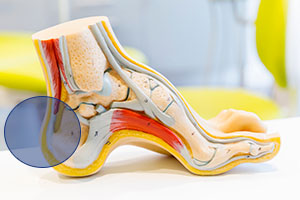
Minimally Invasive Bunion Surgery
Bunions, medically termed hallux valgus, are painful deformities at the base of the big toe, leading to the outward protrusion of the joint. These are not just cosmetic concerns but can significantly impair one’s quality of life by causing discomfort and limiting mobility. With advancements in medical technology, minimally invasive bunion surgery has emerged as a cutting-edge solution to this age-old problem, offering a quicker and less painful recovery compared to traditional surgical methods.
What are bunions, and what impact do they have?
A bunion develops due to the misalignment of the foot’s bones, making the joint of the big toe stick outwards. Factors like genetics, improper footwear, and specific foot shapes can exacerbate this condition. Over time, a bunion can lead to painful experiences, difficulty in fitting shoes, and an array of other foot-related issues.
The evolution of bunion surgery
Historically, bunion correction, or bunionectomy, required open surgical procedures, which, while effective, often came with prolonged recovery periods and significant post-operative pain. Minimally invasive bunion surgery has revolutionised this approach by using smaller incisions, resulting in less trauma to the soft tissues and a host of benefits for the patient.
What does the minimally invasive bunion procedure entail?
During minimally invasive bunion surgery, Dr Alexander utilises specialised treatments introduced through tiny incisions to realign the foot’s bones. This precision-focused method may involve the use of screws, plates, or wires to secure the corrected structure, all while minimising the impact on surrounding tissues.
Who benefits from minimally invasive bunion surgery?
This procedure is ideally suited for individuals experiencing considerable discomfort or functional impairment due to bunions, including:
- Persistent pain that hinders daily activities
- Continuous swelling and inflammation around the big toe
- Noticeable drift of the big toe towards the smaller ones
- Restricted movement of the big toe joint
A thorough evaluation by a foot and ankle specialist is essential to ascertain if minimally invasive surgery is the best course of action.
What does the recovery and post-operative care involve?
Recovery from minimally invasive bunion surgery is notably quicker, with patients often able to walk shortly after the procedure using specialised footwear. Key to a successful recovery is adherence to Dr Alexander’s instructions, including keeping the foot elevated to reduce swelling and careful wound management.
Minimally invasive bunion surgery represents a significant advancement in the treatment of hallux valgus. By offering a solution that reduces recovery time and post-operative pain, this modern approach enables patients to regain mobility and enjoy a better quality of life, free from the constraints of bunion-induced discomfort.
Contact Us
GIVE US A CALL:
CHAT ON WHATSAPP:
MAIL US:
LIFE GROENKLOOF HOSPITAL:
Room 104, Medical Centre West, 50 George Storrar Drive, Groenkloof
RASLOUW PRIVATE HOSPITAL:
Suite 105, Cnr R55 and Lochner avenue, Raslouw, Centurion

